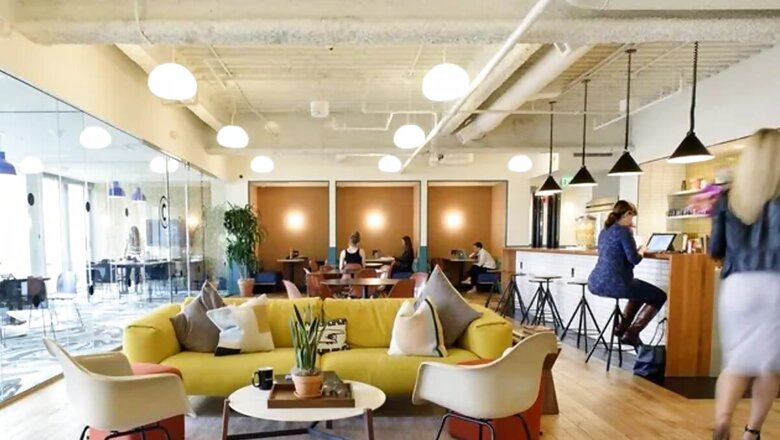
views
Within the ever-changing realm of contemporary company, office space design is crucial for promoting creativity, teamwork, and worker satisfaction. The fundamental ideas of Awfis, a trailblazing company that specialises in creative office space design, are discussed in this interview. The organisation seeks to develop workspaces that transcend utility by skillfully balancing customization and design principles, fusing brand identity with adaptability.
Excerpts from the interview:
What are the key aspects of Awfis’ design ethos, which centres around creating customised and unique office spaces that cater to the specific needs and preferences of each organisation?
Awfis specialises in crafting unique, urbane, and minimalistic workspaces rooted in innovation. Our customer-centric design ethos ensures each office space reflects the unique character of organisations. Our expertise lies in creating customised spaces that align with clients’ brand identities while upholding core design principles. This delicate balance is achieved by our dedicated team, offering creative freedom in colors, textures, and materials. The result is a consistent brand experience aligned with company values, emphasising a re-imagined design with a focus on humanization. Our contemporary designs prioritise warmth and comfort, creating inviting atmospheres for all.
The rise of hybrid work models, where employees split their time between remote and in-office work, demands adaptable spaces. Awfis designs its office environments to accommodate this shift, ensuring that employees can seamlessly transition between remote and in-office work. The fusion of our design principles with our client’s brand identities creates a seamless blend of collaboration and productivity. What sets us apart from our competitors is our unique ability to conceive ideas that are not only actionable but also highly effective, giving us a competitive edge in the industry.
How has the evolution of office design seen a shift towards salvaged materials, industrial design with warmth, and adaptability for different markets?
Office design trends reflect a shift towards sustainability, seen in the use of salvaged materials like reclaimed wood and vintage metalwork. This aligns with the industry’s commitment to eco-friendliness. Industrial elements, such as exposed brick and raw concrete, blend with warm lighting and comfortable furnishings, creating inviting yet productive workspaces. The emphasis on employee well-being is evident, recognising the need for comfort in modern offices. Finally, the adaptability for different markets underscores the recognition that office designs should be tailored to suit the specific demands of local markets and diverse client preferences. In the broader context, designers approach office spaces from the city or location level, gradually zooming in to focus on individual buildings and, ultimately, the office space itself. This holistic approach ensures that the office design is not only functional but also harmonises with its surroundings, creating a seamless integration between the workspace and the environment.
How is a technology like Unreal Engine being leveraged by Awfis to offer customization options in office design without extensive structural changes?
Awfis uses Unreal Engine, a real-time 3D creation platform, to customise smaller office spaces efficiently. The platform’s advanced visualisation and virtual reality capabilities enable highly realistic 3D visualisations, allowing clients to experience and make informed decisions about layouts, colours, and aesthetics in real-time. This interactive process eliminates the need for physical alterations, streamlining design efficiency. Awfis designers can experiment with various elements within the virtual environment, fostering collaboration with clients.
This immersive experience provides a deeper understanding of the proposed design, enabling clients to make more confident decisions. Furthermore, Unreal Engine’s high-quality graphics and rendering capabilities lend a sense of enhanced realism to the virtual design representations. This innovative approach not only enhances the overall design process but also ensures that Awfis delivers tailor-made office spaces that perfectly align with their clients’ visions and requirements.
In the realm of office design, how can optimisation of materials and design elements provide cost-effective solutions without compromising on aesthetics and functionality?
In the realm of office design, optimising materials and design elements for cost-effective solutions without compromising on aesthetics and functionality involves a range of strategic considerations.
Cost-effective office design involves strategic considerations such as incorporating versatile and sustainable materials. Durable, eco-friendly, and multifunctional materials not only reduce long-term costs but also enhance aesthetic appeal. Prioritising durability and investing in energy-efficient solutions, like LED lighting, contribute to significant savings over time. Thoughtful space planning and modular furniture enhance functionality without inflating costs, optimising the office environment for efficiency and adaptability. Through thoughtful design choices, organisations can strike the perfect balance between form, function, and cost, ensuring a conducive and pleasant work environment for all.
What trends do you foresee in the future of office and commercial space design?
The shift to persistent remote work has transformed employee expectations of the office. It’s now seen as a hub for collaboration, requiring adaptable workspace designs that cater to both in-person and remote collaboration. Customizable workspaces, flexible layouts, and advanced technology integration are key. A data-driven approach, considering percentages for specific activities, helps create collaboration hubs within existing office spaces. Employee wellness gains importance, emphasising factors like air quality and natural lighting. Sustainability remains central, encompassing eco-friendly materials and energy-efficient systems. Cutting-edge technology, including automation, AI, and IoT, revolutionises offices for streamlined operations, enhanced security, and personalised experiences. Coworking spaces, especially in Tier-II cities, provide cost-effective solutions. The growing focus on remote work emphasises digital security and privacy in office design. These trends adapt to changing work dynamics and client expectations in the evolving landscape of office and commercial space design.



















Comments
0 comment